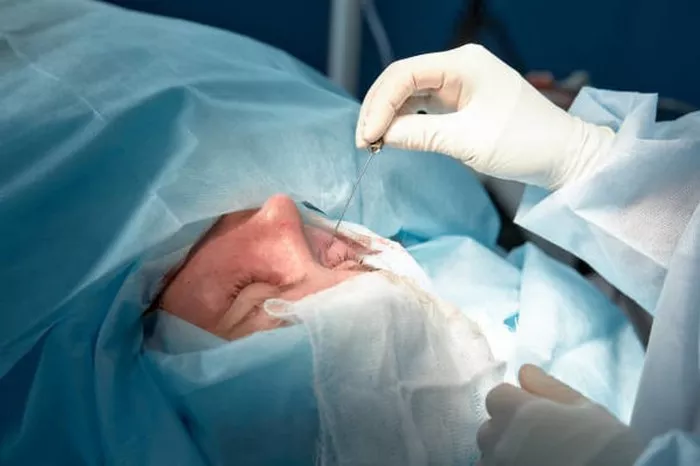Ptosis, often referred to as droopy eyelids, is a medical condition that can affect one or both eyelids, causing them to sag or droop. This condition can not only affect one’s appearance but also impact vision and overall eye health. Ptosis correction, also known as ptosis surgery, is a medical procedure aimed at addressing this condition. In this comprehensive guide, we will explore what ptosis correction is, the causes of ptosis, various correction procedures, and the benefits of seeking treatment.
Understanding Ptosis
Ptosis is characterized by the drooping of the upper eyelid(s) to a lower position than normal, covering a portion of the eye’s pupil. This drooping can vary in severity and may range from a minor aesthetic concern to a significant vision impairment. Ptosis can affect individuals of all ages, from infants to the elderly, and may be present at birth (congenital) or develop later in life (acquired).
Causes of Ptosis
Ptosis can have various underlying causes, which can be broadly categorized into two main types:
Congenital Ptosis: This type of ptosis is present at birth and is often due to developmental issues in the muscles responsible for lifting the eyelid(s). It may occur as an isolated condition or be associated with other congenital eye conditions.
Acquired Ptosis: Acquired ptosis develops later in life and can have multiple causes, including:
a. Aging: As people age, the muscles responsible for lifting the eyelids can weaken, leading to ptosis.
b. Trauma: Eyelid trauma, such as injury or surgery, can damage the muscles or nerves controlling eyelid movement.
c. Neurological Conditions: Certain neurological conditions, such as myasthenia gravis or Horner’s syndrome, can affect eyelid function and lead to ptosis.
d. Medical Conditions: Systemic diseases like diabetes and thyroid disorders can contribute to acquired ptosis.
e. Medications: Some medications, particularly those that affect muscle function, may cause ptosis as a side effect.
f. Tumors: Tumors in or around the eyelid area can put pressure on the muscles or nerves, causing ptosis.
Ptosis Correction Procedures
Ptosis correction is a surgical procedure designed to elevate and tighten the upper eyelid(s) to restore normal eyelid position and improve vision and appearance. Several surgical techniques are available for ptosis correction, and the choice of procedure depends on the cause and severity of ptosis:
Levator Muscle Resection: This is the most common surgical technique for ptosis correction. It involves shortening the levator muscle responsible for lifting the eyelid, allowing for better eyelid positioning.
Frontalis Sling: In cases of severe ptosis or when the levator muscle is severely weakened, a frontalis sling procedure may be performed. This involves using a synthetic material or the patient’s own tissue to connect the eyebrow muscles (frontalis) to the eyelid, allowing the forehead muscles to lift the eyelid.
Müller Muscle Resection: Müller muscle resection is a procedure specifically designed to correct aponeurotic ptosis, a form of ptosis caused by the disinsertion of the levator aponeurosis from the tarsal plate. This procedure involves repositioning the Müller muscle to lift the eyelid.
Blepharoplasty: In some cases, ptosis correction may be combined with blepharoplasty, a cosmetic eyelid surgery. This can address both ptosis and excess skin or fat in the eyelid area.
Benefits of Ptosis Correction
Ptosis correction offers several important benefits, both in terms of visual function and overall well-being:
Improved Vision: The primary objective of ptosis correction is to elevate the eyelid(s) to the appropriate position, allowing for a full field of vision. This can significantly enhance visual acuity and quality of life, especially in cases where ptosis was obstructing the line of sight.
Enhanced Appearance: Ptosis correction can also have a positive impact on one’s appearance. Patients often report feeling more confident and satisfied with their appearance after surgery.
Symmetry: Ptosis correction can restore symmetry to the eyes, creating a more balanced and aesthetically pleasing appearance.
Comfort: Ptosis correction can alleviate discomfort and eye strain that may have resulted from the drooping eyelids.
Preventing Complications: In cases where ptosis is caused by an underlying medical condition or injury, correcting ptosis may prevent further complications and discomfort.
Conclusion
Ptosis correction is a surgical procedure aimed at addressing ptosis or droopy eyelids, which can have aesthetic, functional, and health-related implications. Whether the condition is congenital or acquired, ptosis correction can significantly improve vision, enhance appearance, and provide relief from discomfort. If you or a loved one is experiencing ptosis, consult with a qualified ophthalmologist or oculoplastic surgeon to determine the most appropriate treatment plan and achieve the best possible outcomes for your eye health and overall well-being.


